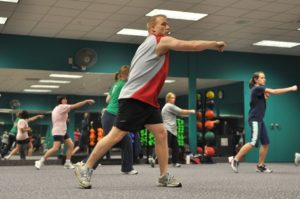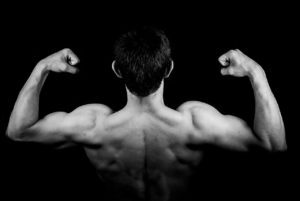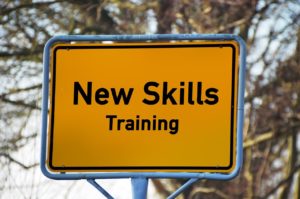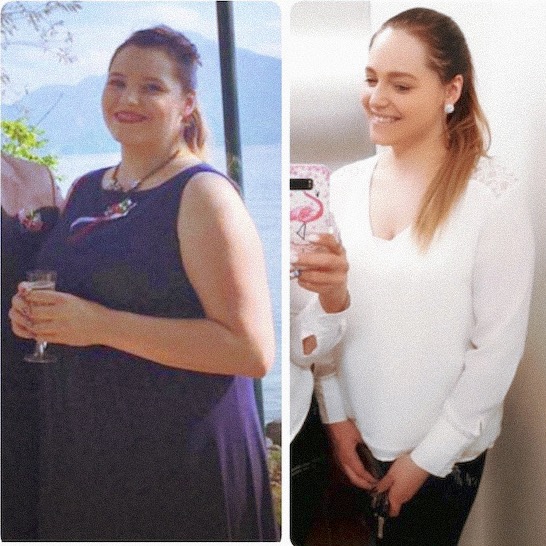
Fitness / Movement
Get active, bring blessings - and let the pounds drop

So far we have been talking about one side of being overweight, namely eating. But there is also another side: everything you eat, you have to put back into action in some way.
When your body is not working (no, mental work does not count here), it re-converts very little of the energy it has absorbed (except for the constant need to produce heat to maintain body temperature).
What is much worse, however, is that the body's entire energy utilization system is demanded less and less and is shut down more and more over time. The body begins to run in "economy mode", because energy is never required for physical exertion anyway, and at the same time much less is made available. The body becomes sluggish, muscles and joints rust - for many people the "economy mode" has long since switched to "standby mode". You remain in this mode until you are 80.
Lack of exercise is indeed one of the worst threats of our time - and at least to a large extent responsible for countless diseases. Only with an active and efficient body do all systems actually run as they are supposed to, the permanent economy mode changes a whole lot of things inside our body as well. If we don't really exert ourselves physically at regular intervals, at some point (sooner rather than later) every kind of effort will become too much. Even many young people today have reached this point long ago.
Conversely, an active body that is regularly challenged is much better able to maintain a reasonable energy metabolism and to break down excess energy once in a while. We need regular efforts if we want to function properly at all. If you want to lose weight, this applies twice over. Without a sufficient amount of exercise, it will be very difficult for you to lose weight at all - and without a certain amount of athletic training, you will not get a "dream body". Unfortunately, goji berries can't do that to give you an athletic figure.
Beyond the trends

Just as with nutrition, there are also many current trends in the fitness sector. This starts with yoga, where everyone has the ambition to impress as many others as possible with the most unusual positions at some point, and continues with any dance workouts, calisthenics and grueling gymnastics programs once intended for elite soldiers - right up to martial arts.
Often the goal is less fitness than simply impressing others (or the opposite sex). The classic way to combat lack of exercise is jogging, the kind of artificial horse trot that a resourceful businessman invented in the early 1980s to sell his running shoes by the million. No one in the history of mankind has ever jogged across the savannah, believe me.
Nobody could have afforded the knee problems at that time in terms of survival. In addition, the necessary fully cushioned shoes for the shaggy trot were still rather difficult to get. Don't get me wrong: Any kind of movement is much better than no movement at all. This always applies unseen. Even if it concerns trend sports. As long as you don't harm your body with it and you really have to make a serious effort for a long enough period of time, it helps you.
It doesn't matter if you are lifting full limousines, the dumbbells in the gym or your little daughter. The main thing is that it is hard enough and you do it long enough. The "how" doesn't matter at all. What counts is how much and how long.
To highlight another trend - the 10,000 steps per day is simply a benchmark. Humans are made to walk (in fact, our body is evolutionarily designed to walk 20 to 30 km per day in search of food and beyond that for a short escape or hunting sprint) - but 10,000 steps is an arbitrary and unjustifiable number. It is simply striking.
For people of normal height, the distance corresponds to about 7 to 8 km of travel, which is actually much less than what our bodies were originally designed for. For very unfit people it is conversely already an almost unmanageable distance if it is to be walked daily.
If you set a goal of 10,000 steps for yourself, which you want to run every day, you are of course welcome to do so.
This number is as good as any other. But take the freedom to set your own goal - and if you can, to increase it at regular intervals to challenge your body.
Misconception: Calories burned

A lot of fitness gadgets indicate how many calories are burned in all kinds of activities. That works then not rarely in such a way that one stuffs cream cake in itself and then calculated 23.5 minutes on the exercise bike tramples, until the clock says that one has trained its cream cake now again.
Most people often wonder why they gain weight anyway. If you have read this far, you should understand why this cannot work at all. Especially not if you forgot to include dinner in the calculation in addition to the cream pie.
How much energy an individual activity costs depends on the performance level of the activity, your own body weight and also your own level of fitness. In addition, not the last thing eaten is the only thing that is burned if you move in any way. Our body does function in a slightly more complex way.
The fact that our body uses 4.5 kcal per 100 steps when "walking fast" is at best a rough guide value that can be reasonably correct - or not at all. Nobody can say this, especially not if neither the body weight of the person, the fitness level nor the walking speed in relation to the pulse level (=exertion level) is taken into account. And even then the calculated calories do not simply reduce the amount of food consumed by the calories burned.
It is not uncommon for people to come up with an alleged calorie balance of a few hundred calories per day in all their activities - and still even gain weight. That is simply because the calculation method is so simply not goal-prominent. This is like counting the stars in the evening sky to estimate the size of the Milky Way. Behind what you see, there is still a lot of what you do not see and what in the end actually makes up the largest part of the whole.
How much exercise do I need?

The same applies to the amount of exercise required as to the amount of food: your body itself is the measure of all things.
You should be wary of overkill, if you stretch the whole thing a bit in a sensible way to challenge yourself, the results will probably be a bit better.
No one can tell you or calculate for you whether you should do ten or twenty push-ups a day, whether you should take 5,000 steps, 10,000 steps or 12 km. You can feel yourself best where your performance limits are, where you are obviously overtaxing your body and what is not yet particularly demanding.
You won't find a better, more individual and more accurate display than this anywhere else, because it is for you alone. As a rough guideline, you should sweat for at least half an hour continuously - per day - if you want to see significant results. At least that's what sports medicine says.
If you have already learned to listen to your body better in the first chapter with the exercises and recommendations, you will most likely have no difficulty in feeling these limits for yourself. A little bit of ambition and willingness to challenge you is needed beyond that. It should be strenuous so that your body really has to perform. Sweating and wheezing breathing are included here.
Regularity is also very important: once a week is clearly not enough - it's best to integrate it daily, especially if you don't have to work physically. Your muscles, joints and the tendons and ligaments in your body very often need loosening and a little effort to stay in shape. Once a week you will not achieve this.
With daily training, your body awareness, coordination and often your mood and energy level will improve significantly. These are the additional positive effects you will gain. In addition, daily exercise will quickly become a habit, so that after a short time you will no longer have to overcome yourself every single day. This usually only takes 3 to 4 weeks.
"Shaping" means above all: to shape muscles

When the word "dream body" is used, many people automatically think of some athletically shaped people, who are often seen somewhere as role models. "Fit" almost automatically means muscular and well formed.
In fact, there is no denying that this is the case:
A well developed and balanced musculature is indeed very important for our body shape. Even if you are "thin" but have no muscles at all, it doesn't look good. The Instagram generation has long since coined its own term for this: "skinny-fat". So, although terribly thin, it still looks flabby and unsightly and is not athletically shaped. The term itself is a contradiction, because what is "skinny" simply can't be "fat", but the apparent contradiction brings it to the point: In all the thinness, the taut form is still missing. And that comes exclusively from well-formed muscles.
What makes a tiger so attractive and sporty? Or a horse? In all mammals, it is above all the pronounced muscle corset that makes them look dynamic, fit and athletic. That is no different with us humans. But you don't have to look like Schwarzenegger to do that - it doesn't take that much. Even if it's exaggerated here, the direction of the whole thing and the approach are still right.
Muscles are formed primarily through strength training - and that means maximum strength training. The training goal for each training unit is clear: the most comprehensive possible muscle failure of the trained muscle, i.e. one trains short and hard until the muscle is completely exhausted. From countless studies and investigations, we also know the conditions under which maximum strength training is optimally effective, i.e. brings the best results in the shortest possible time:
Training must be done every second day, the strength exercises should be performed with 70% to 85% of the possible maximum strength and the weight used must be chosen high enough that 3 x 10 repetitions are sufficient for the muscle to fail, i.e. no further repetition is possible.
In this way you can shape your muscles as quickly as possible, let them grow a little and get them in good shape. That sounds like a good training plan after all. Which muscles you should train or shape at all, which equipment you should use and which weights you should start with, you should best consult a professional trainer - or in a gym of your choice if you don't want to train at home just for yourself.
Put everything into practice - and the results you can expect

This brings us to the end. The question you are now certainly asking yourself is how you can best put the wealth of this information into practice in order to still achieve your dream figure in 2020. That is what this chapter is for.
If you have read carefully up to this point, you will have noticed that it is not only about the right diet - but also about exercise.
Only both together will allow you to shape your body the way you want it to be and only both together will make you not only thin but also fit. As much as you may be reluctant to think about it at the moment - but without sweaty activities it won't really be anything. By the way, this would also be true for any kind of diet - only no one ever mentions it there.
Nutrition is not about great and heroic renunciation of anything - it is instead about several small changes in your habits, more conscious eating and listening to your body more and better. The advantage is obvious: these habits are not only effective during a limited period of dieting, but they will accompany you for the rest of your life. Not only do they make you thin - they also make you healthier, more energetic and will help you to maintain your weight at all times in the future.
No diet can do that - when the diet phase is over, everything is back to the old nutritionally quickly. And in very many cases very quickly back to the old weight. A long-term nourishing conversion to a healthier, your body really adapted nourishing way you take against it only once - and it remains effective a life long. It will also help you later on to maintain your ideal weight and not get anywhere near the weight gain trap.
It's worth it - even if it takes a while until you have implemented everything.
Changing habits takes time. Especially when it comes to habits that you already have and have consolidated for a very long time. Our eating habits are such habits, many of them we have acquired in early childhood. Nevertheless, such habits can be changed naturally. This is exactly what our plan for the dream figure without diet serves.

Wir möchten dir das beste Benutzererlebnis bieten und arbeiten hart und viel an unseren Quiz. Beantworte die Fragen wahrheitsgemäß, damit wir dir das beste Ergebnis liefern können.















